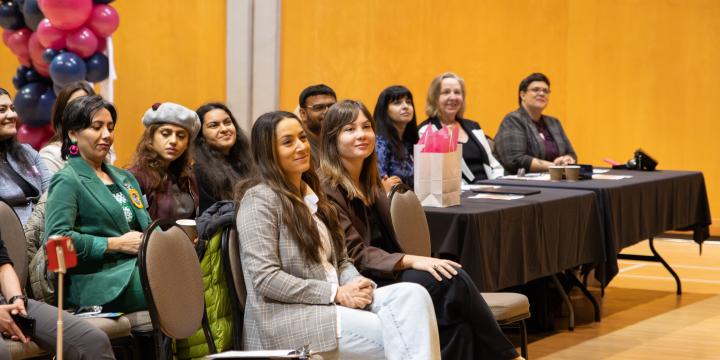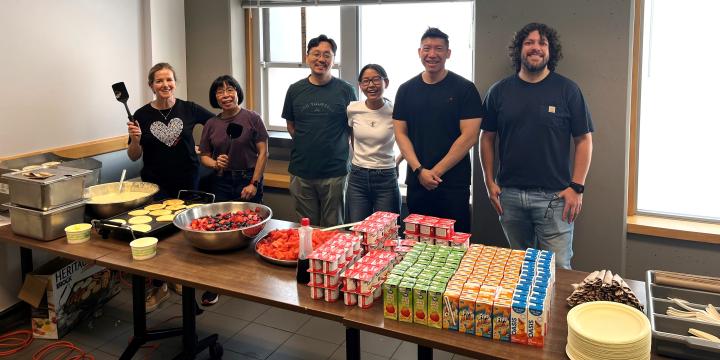
Did you know that approximately 30% of youth in Canada experience dating violence at one point in their life?[1]
During preteen and teen years, young people are learning the skills they need to form positive, healthy relationships[2] and research shows that “…children who grow up in healthy family relationships develop relationship skills that form the foundation for healthy relationships through adolescence and into adulthood.”[3]
The YWCA’s dating violence prevention program, ‘Dating Safe’, aims to provide youth with the knowledge and skills necessary to develop healthy relationships that are free from violence and abuse.
Usually run in two high schools in the Metro Vancouver area, the program is now being provided to students virtually due to the COVID-19 pandemic restrictions. The curriculum has been developed in collaboration with youth, educators and experts in the field and can be a helpful resource for teens, as well as for their friends, parents and teachers.
Over the next eight weeks, we will be sharing weekly blogs covering the eight topics of the program:
Week 1 (July 13): Healthy Relationship Skills
Research shows that teens who are socially isolated may experience worse effects of dating violence and may have more trouble leaving abusive relationships.[4]
Our blog will cover:
- What healthy/unhealthy relationship look like
- Importance of developing healthy relationships and the impact on our mental health
Week 2 (July 20): Gender Stereotypes
“Wrongful gender stereotyping is a frequent cause of discrimination against women and a contributing factor in violations of a vast array of rights such as the right to health, adequate standard of living, education, marriage and family relations, work, freedom of expression, freedom of movement, political participation and representation, effective remedy, and freedom from gender-based violence.”[5]
Our blog will cover:
- How gender stereotypes affect dating relationships
Week 3 (July 27): Communication Skills
“In a healthy relationship, communication is key. When you communicate effectively, you understand your partner better and make your relationship stronger. When you can resolve conflicts successfully, you are developing a healthy, mature relationship.”[6]
Our blog will cover:
- Importance of assertive communication and conflict resolution
- Building emotional intelligence
Week 4 (August 3): Building Consent Culture
The most common types of unwanted sexual behavior experienced by women in public were unwanted sexual attention (25%), unwanted physical contact (17%), and unwanted comments about their sex or gender (12%). These were also the three most common types of behavior experienced by men, though at a considerably lower rate (each 6%).[7]
Our blog will cover:
- Explaining consent and how to build consent culture in our communities
Week 5 (August 10): Social Media and Dating
According to the United Nations, 75% of women have experienced cyber violence online.[8] LGBTQ2S youth experience cyber-violence three times as much as non- LGBTQ2S youth.[9]
Our blog will cover:
- Evaluating the positive and negative impacts of social media on our relationships
Week 6 (August 17): Understanding Dating Violence
“More than 11 million Canadians have been physically or sexually assaulted since the age of 15.”[10]
Our blog will cover:
- Looking at types of dating violence
- Identifying red flags
- How to get support for yourself or others
Week 7 (August 24): Intoxication Culture
44% of youth surveyed in BC indicated that they had drank heavily in the last month.[11]
Our blog will cover:
- Examine the intoxication culture that is present in our society
- How intoxication culture impacts relationships due to excessive alcohol and substance use and the impacts on teens health and well-being
Week 8 (August 31): Bystander Intervention
“As few as 8% of adolescents who experience dating violence reach out to parents, teachers, health care practitioners, or other adults who can help.”[12]
Our blog will cover:
- Look at safe ways to intervene when you see dating violence happening
- Share alternative measures to take when intervening is not an option
Dating Safe – A YWCA Dating Violence Prevention Program
In response to the widespread issue of gender-based violence in Canada, the Public Health Agency of Canada is investing $40 million over five years in programs aiming to prevent gender-based violence from a health perspective. YWCA Metro Vancouver is one of the 24 organizations to receive funding to promote healthy relationships and prevent dating violence among teens and youth.
Dating Safe aims to provide youth with the knowledge and skills necessary to develop healthy relationships that are free from violence and abuse. With this goal in mind we conducted a needs assessment, which included a comprehensive literature review, interviews and focus groups with experts in the field, youth, and educators. It was immediately obvious that more programming centered around dating violence prevention and skill development was needed in high schools.
Based on our research, we developed an eight-module program to be delivered to Grade 8 students as part of their Physical Health and Education classes. During preteen and teen years, young people are learning the skills they need to form positive, healthy relationships.[13] Research shows that early intervention efforts are a “developmentally timed point of leverage for relationship change.”[14]
References
[1] https://youthdatingviolence.prevnet.ca/learn-more/everyone/how-to-make-a-difference/
[2] Centre for Disease Control and Prevention. “Understanding Teen Dating Violence Fact Sheet,” 2016, https://www.cdc.gov/violenceprevention/pdf/teen-dating-violence-factsheet-a.pdf (Accessed January, 2018)
[3] https://www.prevnet.ca/sites/prevnet.ca/files/HealthyRelationshipsPaper.pdf
[4] https://youthdatingviolence.prevnet.ca/learn-more/caregivers/when-youth-dating-violence-is-suspected-or-disclosed/
[5] https://www.ohchr.org/EN/Issues/Women/WRGS/Pages/GenderStereotypes.aspx
[6] https://www.loveisrespect.org/healthy-relationships/conflict-resolution/
[7] https://www150.statcan.gc.ca/n1/pub/85-002-x/2019001/article/00017-eng.htm
[8]http://www.unwomen.org/en/news/stories/2015/9/cyber-violence-report-press-release
[9]https://www.glsen.org/press/study-finds-lgbt-youth-face-greater-harassment-online
[10] https://www150.statcan.gc.ca/n1/pub/85-002-x/2019001/article/00017-eng.htm
[11] McCreary Centre Society – BC Adolescent Health Survey – Page 46
[12] https://www.prevnet.ca/blog/campaigns/february-is-teen-dating-violence-awareness-month
[13] Centre for Disease Control and Prevention. “Understanding Teen Dating Violence Fact Sheet,” 2016, https://www.cdc.gov/violenceprevention/pdf/teen-dating-violence-factsheet-a.pdf (Accessed January, 2018)
[14] Wekerle, Christine and David A. Wolfe. “Dating Violence in Mid-Adolescence: Theory, Significance and Emerging Prevention Initiatives,” Clinical Psychology Review, Vol. 19, No. 4, pp. 435–456, 1999.
Photo by Anthony Intraversato on Unsplash

